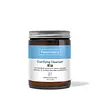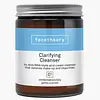What's inside
What's inside
 Key Ingredients
Key Ingredients

 Benefits
Benefits

 Concerns
Concerns

 Ingredients Side-by-side
Ingredients Side-by-side

Water
Skin ConditioningPropanediol
SolventGlycolic Acid 4%
BufferingCetyl Alcohol
EmollientGlyceryl Stearate
EmollientSalicylic Acid 2%
MaskingPolyglyceryl-6 Stearate
EmollientSodium Glycolate
BufferingQuillaja Saponaria Bark Extract
CleansingLactic Acid 1%
BufferingSodium Salicylate
PreservativeCetyl Hydroxyethylcellulose
Emulsion StabilisingGlyceryl Caprylate
EmollientSodium Lactate
BufferingPolyglyceryl-6 Behenate
Emulsion StabilisingCitric Acid
BufferingPotassium Sorbate
PreservativeCitrus Nobilis Peel Oil 0.97%
MaskingWater, Propanediol, Glycolic Acid 4%, Cetyl Alcohol, Glyceryl Stearate, Salicylic Acid 2%, Polyglyceryl-6 Stearate, Sodium Glycolate, Quillaja Saponaria Bark Extract, Lactic Acid 1%, Sodium Salicylate, Cetyl Hydroxyethylcellulose, Glyceryl Caprylate, Sodium Lactate, Polyglyceryl-6 Behenate, Citric Acid, Potassium Sorbate, Citrus Nobilis Peel Oil 0.97%
Water
Skin ConditioningGlycolic Acid 4%
BufferingCetyl Alcohol
EmollientGlyceryl Stearate
EmollientCocamidopropyl Dimethylamine
EmulsifyingPrunus Armeniaca Kernel Oil
MaskingSalicylic Acid 2%
MaskingPolyglyceryl-6 Stearate
EmollientSodium Glycolate
BufferingPrunus Amygdalus Dulcis Oil
Skin ConditioningPersea Gratissima Oil
Skin ConditioningLactic Acid 1%
BufferingSodium Lactate
BufferingSodium Salicylate
PreservativeCetyl Hydroxyethylcellulose
Emulsion StabilisingPolyglyceryl-6 Behenate
Emulsion StabilisingXanthan Gum
EmulsifyingCitrus Nobilis Peel Oil 0.97%
MaskingWater, Glycolic Acid 4%, Cetyl Alcohol, Glyceryl Stearate, Cocamidopropyl Dimethylamine, Prunus Armeniaca Kernel Oil, Salicylic Acid 2%, Polyglyceryl-6 Stearate, Sodium Glycolate, Prunus Amygdalus Dulcis Oil, Persea Gratissima Oil, Lactic Acid 1%, Sodium Lactate, Sodium Salicylate, Cetyl Hydroxyethylcellulose, Polyglyceryl-6 Behenate, Xanthan Gum, Citrus Nobilis Peel Oil 0.97%
Ingredients Explained
These ingredients are found in both products.
Ingredients higher up in an ingredient list are typically present in a larger amount.
Cetyl Alcohol is a fatty alcohol. Fatty Alcohols are most often used as an emollient or to thicken a product.
Its main roles are:
Though it has "alcohol" in the name, it is not related to denatured alcohol or ethyl alcohol.
The FDA allows products labeled "alcohol-free" to have fatty alcohols.
Learn more about Cetyl AlcoholWe don't have a description for Cetyl Hydroxyethylcellulose yet.
Citrus Nobilis Peel Oil is an oil.
Glyceryl Stearate is a mix of glycerin and stearic acid.
It is used to stabilize the mixing of water and oil ingredients. By preventing these ingredients from separating, it can help elongate shelf life. It can also help thicken the product's texture.
As an emollient, it helps soften skin and supports barrier-replenishing ingredients.
In cosmetics, Glyceryl Stearate is often made from vegetable oils or synthetically produced.
This ingredient may not be fungal-acne safe
Fun fact: The human body also creates Glyceryl Stearate naturally.
Learn more about Glyceryl StearateGlycolic Acid is arguably the most famous alpha hydroxy acid (AHA) with tons of research backing its benefits.
It is found naturally in sugar cane but the form used in skincare is usually synthetic for purity and stability.
Glycolic acid removes the top layer of dead skin cells to allow newer and fresher ones to emerge.
AHAs work by breaking down the structural “glue” that holds old skin cells in place. When that buildup is gone, your skin can renew itself more efficiently.
Research also shows glycolic acid stimulates collagen production, helping to firm and thicken the skin over time. This is one of its biggest advantages over other AHAs.
Overall, glycolic acid helps with:
Fun fact: Glycolic acid boosts skin hydration by helping it produce molecules that increase hyaluronic acid naturally.
To work best, glycolic acid products should have a pH between 3-4 (that’s where exfoliation is most effective but still gentle on skin).
The pH and concentration of a product are key to its effectiveness:
It is normal to feel a slight stinging sensation when using glycolic acid. This usually fades as your skin adjusts.
Because glycolic acid has the smallest molecular size in the AHA family, it can penetrate deeper, which enhances its effectiveness but also makes it more likely to irritate sensitive skin.
If your skin is very sensitive or prone to rosacea, glycolic acid may be too strong; in that case, try milder options like lactic acid or a PHA instead.
Recent studies suggest glycolic acid might even help protect against UV damage. But don’t skip sunscreen! Freshly exfoliated skin is more sensitive to the sun.
Glycolic acid is a skincare superstar. It smooths, brightens, hydrates, and firms the skin. Unless you’re highly sensitive, it’s well worth adding to your routine.
Read more about some other popular AHA's here:
Learn more about Glycolic AcidLactic Acid is another well-loved alpha hydroxy acid (AHA). It is gentler than glycolic acid but still highly effective.
Its main role is to exfoliate the surface of the skin by loosening the “glue” that holds dead skin cells together. Shedding those old cells leads to smoother, softer, and more even-toned skin.
Because lactic acid molecules are larger than glycolic acid, they don’t penetrate as deeply. This means they’re less likely to sting or irritate, making it a great choice for beginners or those with sensitive skin.
Like glycolic acid, it can:
Lactic acid also acts as a humectant (like hyaluronic acid). It can draw water into the skin to improve hydration and also plays a role in the skin's natural moisturizing factor (NMF) in the form of sodium lactate.
Studies show it can boost ceramide production to strengthen the skin barrier and even help balance the skin’s microbiome.
To get results, choose products with a pH between 3-4.
Lower strengths (5-12%) focus on surface exfoliation; higher strengths (12% and up) can reach deeper in the dermis (deeper, supportive layer) to improve skin texture and firmness over time.
Though it was originally derived from milk, most modern lactic acid used in skincare is vegan. It is made through non-dairy fermentation to create a bio-identical and stable form suitable for all formulations.
When lactic acid shows up near the end of an ingredient list, it usually means the brand added just a tiny amount to adjust the product’s pH.
Legend has it that Cleopatra used to bathe in sour milk to help reduce wrinkles.
Lactic acid is truly a gentle multitasker: it exfoliates, hydrates, strengthens, and brightens. It's a great ingredient for giving your skin a smooth, glowing, and healthy look without the harshness of stronger acids.
Read more about some other popular AHA's here:
Learn more about Lactic AcidPolyglyceryl-6 Behenate isn't fungal acne safe.
Polyglyceryl-6 Stearate isn't fungal acne safe.
Salicylic Acid (also known as beta hydroxy acid or BHA) is a well-known ingredient for treating skin that struggles with acne and clogged pores. It exfoliates both the skin's surface and deep within the pores to help clear out buildup, control oil, and reduce inflammation.
Unlike AHAs (alpha hydroxy acids), salicylic acid is oil-soluble. This allows it to penetrate into pores which makes it especially effective for treating blackheads and preventing future breakouts.
Salicylic acid is also known for its soothing properties. It has a similar structure to aspirin and can calm inflamed or irritated skin, making it a good option for acne-prone skin that is also sensitive.
Concentrations of 0.5-2% are recognized by the U.S. FDA as an over-the-counter topical acne product.
It can cause irritation and/or dryness if one's skin already has a compromised moisture barrier, so it's best to focus on repairing that before introducing this ingredient into your routine.
While salicylic acid does not increase sun sensitivity, it’s still important to wear sunscreen daily to protect your skin.
If you are looking for the ingredient called BHA or Butylated Hydroxyanisole, click here.
Learn more about Salicylic AcidSodium glycolate is the sodium salt of glycolic acid, a famous AHA. It has buffering properties to help balance a product's pH levels.
This ingredient does not act as an exfoliant.
Sodium Lactate is the sodium salt of lactic acid, an AHA. It is a humectant and sometimes used to adjust the pH of a product.
This ingredient is part of our skin's NMF, or natural moisturizing factor. Our NMF is essential for the hydration of our top skin layers and plasticity of skin. NMF also influences our skin's natural acid mantle and pH, which protects our skin from harmful bacteria.
High percentages of Sodium Lactate can have an exfoliating effect.
Fun fact: Sodium Lactate is produced from fermented sugar.
Learn more about Sodium LactateThis ingredient is the sodium salt of salicylic acid, the famous anti-acne ingredient.
Officially, this ingredient is used as a preservative. However, some studies found Sodium Salicylate to have exfoliating properties. Further studies are needed.
Water. It's the most common cosmetic ingredient of all. You'll usually see it at the top of ingredient lists, meaning that it makes up the largest part of the product.
So why is it so popular? Water most often acts as a solvent - this means that it helps dissolve other ingredients into the formulation.
You'll also recognize water as that liquid we all need to stay alive. If you see this, drink a glass of water. Stay hydrated!
Learn more about Water